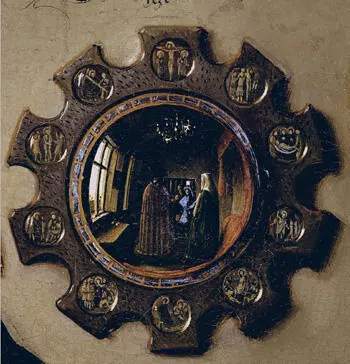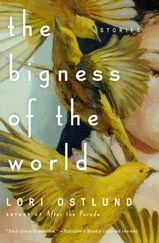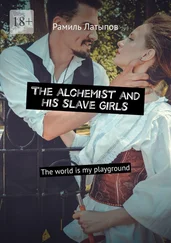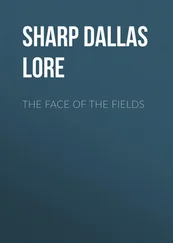Between this world and the next, near and far, two little figures are posted like watchers on a promontory. One is studying the view from the palace battlements, the other turns slightly, glancing back in our direction. He wears a red turban and carries the rod of a courtier. The crucial fact about this figure is once again its position, on the threshold between two worlds, present and future, and right at the epicentre of the painting. Draw the diagonals and they would meet on a point: the hand of the man in the turban.
The angel in the New Jerusalem, according to Revelation, has a rod to measure the glorious architecture of the city. The measurements of Van Eyck’s New Jerusalem are exceptionally small – the whole picture is only about two feet wide – and his rod is thus sensationally tiny, a microscopic yardstick for a miniature vision. But even without the biblical aside, and Van Eyck’s paintings are always theologically rich, the little man in his eye-catching turban has a modest humour all of his own: discreet enough to escape Rolin’s self-centred attentions, you feel, but there for those who have eyes to see him.
Van Eyck places himself at the crosshairs of his own field of vision; painting the world, and all its contents, he numbers himself within it. This is not narcissism but modest logic: even without a mirror, or reflections, we are visible to ourselves somewhat. Shut one eye and the projecting nose becomes apparent; look up and see the overhanging brow. We have an outer as well as an inner sense of our own bodies that reflections confirm or confound; and catching sight of these reflections, we are made episodically conscious of our own bodily existence – atoms in time, maybe, but nonetheless the viewing centre of our world.
It has been argued that the only reason anyone ever imagines these little men in red turbans might be Van Eyck is because of another painting by him known as Man in Red Turban . 6Or at least that was its title until very recently when visual evidence was finally allowed to outweigh academic caution just a fraction and scholars relabelled it Portrait of a Man (Self-Portrait?) . 7In fact, there is a faint long-nosed resemblance between this man and the courtier with his rod that has nothing to do with turbans; and turbans are in any case off the point.
Van Eyck stares piercingly out of the picture, a tight-lipped man with fine silver stubble. His look is shrewd, imperturbable, serious. The eyes are a little watery, as if strained by too much close looking, and there is a palpable melancholy to the picture. Look closer, as Van Eyck’s art irresistibly proposes, and you notice something else – that the eyes are not in equal focus. The left eye is painted in perfect register and so clearly that the Northern light from the window glints minutely in the wet of it – the world reflected; but the other is slightly blurred, you might say impressionistic. These eyes are trying to see themselves, have the look of trying to see themselves in some kind of mirror. ‘Jan Van Eyck Made Me’ is written below the image. Along the top runs the inscription ‘Als ich kan’ – ‘As I can’, and punningly ‘As Eyck can’.
Van Eyck painted the ‘Als ich kan’ motto on the frames of other portraits too but it is far more emphatically displayed here to create the illusion that it has been carved into the gilded wood itself. It also appears where he normally names the sitter. But more than that, its play upon the first and third person epitomizes the I-He grammar of self-portraiture to perfection. Here I am, gravely scrutinizing my face in the mirror, and the picture; there he is, the man in the painting.
I am here. He was here. ‘Jan Van Eyck fuit hic’ is written in an exquisite chancery hand on the back wall of The Arnolfini Portrait . Ever since Kilroy was here and everywhere in the twentieth century the phrase has epitomized graffiti, which is, in its elegant way, exactly how Van Eyck uses it.
Everyone knows the Arnolfini – the rich couple with the dog, the oranges, the mirror and the shoes, touching hands in an expensively decorated bedroom. But nobody knows quite what they are doing there, in a bedroom of all places, an intimacy unheard of in Flemish portraiture. This joining of hands, is it the moment of betrothal, the marriage itself, the party afterwards, or nothing to do with a wedding? The bed awaits with its heavy scarlet drapes, the dog hovers, the texture of its fur exquisitely summoned all the way from coarse to whisper-soft. Perhaps he is an emblem of fidelity; perhaps this is a merger between two Italian families trading in luxury goods, as lately suggested, but all interpretations are necessarily reductive for none can fully account for the strange complexities of the painting. Even if one knew precisely why Giovanni Arnolfini was raising his right hand as if to testify he would still be a peculiarly disturbing presence, with his reptilian mask and lashless eyes, dwarfed beneath a cauldron of a hat. He touches, but does not look at the woman. She struggles to hold up the copious yardage of a dress that nobody could possibly walk in. Behind them is that writing on the wall that makes so much of the historic moment, and beneath that is the legendary mirror in which Van Eyck is reflected (in blue), entering into the scene.
Jan Van Eyck was here. It is not strictly accurate in terms of tense, of course, for Van Eyck has to be here right now as he paints his story on the wall. He sends a message to the future about the past, but it is written in the present moment; the paradox is its own little joke, as for every Kilroy. But the mirror also tinkers with the tense of the picture. Without it, you would simply be looking at an image of the past, a time-stopped world of wooden shoes, abundant robes and a sign-language too archaic to decode. But things are still happening in the mirror, a man is on the verge of entering, life continues on our side – the painter’s side – of this room. For Van Eyck invented something else too, not just a new way of painting but the whole idea of an open-ended picture that extends into our world and vice versa. Just as his reflection passes over the threshold to enter the room where the Arnolfini stand, so he creates the illusion that we may accompany him there as well. The tiny self-portrait is the key to the door. Art need not be closed.

Detail of The Arnolfini Portrait , 1434 Jan van Eyck (c. 1390–1441)
The inscription in The Arnolfini Portrait announces the artist’s role as witness and narrator – I was here, this was the occasion – though the self-portrait says something more about the reality depicted. The liquid highlights in the eyes, the pucker of orange peel, the flecked coat of the dog, the embrasure of clear light, reflected again in the brass-framed mirror: the whole powerfully real illusion was contrived by Jan Van Eyck, transforming what he saw into what you now see here. He is there in the picture connecting our world to theirs, a pioneer breaking down frontiers.
As usual, the painter makes no spectacle of himself. Van Eyck’s self-portraits are conceivably the smallest in art, certainly the most discreet, yet their scale is in inverse ratio to their metaphysical range. The visible world appears to be outside us, viewed through the windows of the eyes, and yet it contains us all.
Конец ознакомительного фрагмента.
Текст предоставлен ООО «ЛитРес».
Прочитайте эту книгу целиком, купив полную легальную версию на ЛитРес.
Читать дальше













